The Science of Bilateral Stimulation (BLS)
How alternating left–right input can help regulate arousal, reduce rumination, and support calm focus.
TL;DR
- What it is: A gentle left–right rhythm delivered as visual (eye movements), tactile (taps or vibrations), or audio (alternating tones).
- Why it helps: The rhythm appears to trigger an orienting response, rebalance attention, lightly load working memory, and nudge the autonomic nervous system toward regulation.
- Where it’s used: Everyday stress management, wind-down, pre-task focus, and in therapy contexts (e.g., EMDR).
- How to start: 60–90 second sets at a comfortable cadence, paired with a simple anchor (breath, calm image, or a neutral phrase).
What Is Bilateral Stimulation?
Bilateral stimulation (BLS) is a pattern of alternating left–right input. You might track a dot moving left–right with your eyes, feel gentle taps or wearable pulses on each side of the body, or listen to tones that alternate between ears. Many people find this rhythmic alternation helps interrupt worry loops, soften physical tension, and bring attention back to the present.
How Might BLS Work? (Plain-English Science)
1) Orienting & Attentional Reset
Novel or rhythmic cues can trigger an orienting response—a short, adaptive shift of attention. Alternating left–right cues repeatedly invite the brain to re-orient in a predictable way, which may reduce sticky, repetitive thought patterns and make it easier to notice the body and breath.
2) Interhemispheric Communication & Network Balance
Left–right stimulation may promote coordination between hemispheres and large-scale networks involved in attention, salience, and default-mode activity. Practically, that can feel like moving from “tunnelled, over-focused worry” to a broader, steadier awareness.
3) Light Working-Memory Load
Following a moving cue or sensing alternating taps lightly engages working memory. That gentle load can reduce the intensity and vividness of intrusive thoughts or emotions, making them easier to process without getting pulled under.
4) Rhythmic Entrainment & Autonomic Regulation
Predictable rhythms tend to entrain physiology: breathing slows, muscles soften, heart-rate variability can improve. When the pace is comfortable (not rushed), the body often shifts toward parasympathetic (rest-and-digest) tone.
Modalities & Parameters
- Visual: Track a point or bar that moves left–right. Best when you can look at a screen or object.
- Tactile: Alternating taps or wearable pulses on wrists/hands. Discreet for on-the-go use.
- Audio: Headphones play soft tones alternating between ears. Great for travel and wind-down.
Cadence & intensity: Keep it gentle. Many people like 0.5–1.5 alternations per second. If you feel more alert than calm, slow the cadence or lower intensity. Short sets (60–90 seconds) with 10–15s pauses usually work better than marathon sessions.
What the Evidence Suggests
In therapy settings (e.g., EMDR): BLS is used alongside structured protocols to help people process difficult memories safely. Research in this area suggests BLS can support attentional control, working-memory taxation, and reductions in physiological arousal. Results vary by individual and context.
For everyday self-regulation: Outside therapy, many people use BLS for stress relief, pre-task settling, and evening wind-down. While everyday benefits are widely reported, responses are individual—use gentle pacing and note what works best for you.
When It Helps—and When to Pause
- Helpful for: Racing thoughts, pre-meeting nerves, post-conflict tension, travel stress, and getting ready for focused work or sleep.
- Pause/adjust if: Distress spikes quickly, dizziness appears, or you’re processing active trauma memories without support. Slow the cadence, lower intensity, or switch to basic grounding (look around, name 5 things you see, lengthen the exhale).
Educational only—this is not a substitute for professional care. If you have clinical questions, consult a qualified clinician.
How BLS Compares to Other Calming Skills
Breathing techniques and progressive muscle relaxation are fantastic tools. If you’re unsure which to use when, see our comparison:
BLS vs. Box Breathing vs. PMR: What Works When?
How to Start with Bilateral Stimulation (2-Minute Quick Start)
Estimated time: about 2 minutes. You’ll need: headphones (for audio) or a quiet spot, and your chosen modality (eye tracking, alternating taps, or left–right tones).
- Pick a modality: eye tracking, alternating taps, or alternating tones.
- Choose an anchor: breath, a calm image, or a neutral phrase (e.g., “Right now, I’m safe.”).
- Run one set: 60–90 seconds, then pause 10–15 seconds and notice what changed (breath, muscles, thoughts).
- Repeat once: If helpful, do one more short set at the same or slower pace.
For a longer routine, read our how-to guide: 5-Minute Stress Reset.
Hands-Free Option (Everyday Use)
If tapping or tracking is awkward mid-day, a hands-free wearable removes friction. Haptix Flow delivers quiet, alternating left–right pulses you can wear at your desk, on flights, or before bed—no tapping or screen required. Adjust intensity and cadence to your comfort, and use short sets throughout the day.
FAQ
How fast should it alternate?
Start slow (about 1 alternation per second) and adjust until it feels calming, not stimulating.
How long until I notice effects?
Many people feel a shift within 60–90 seconds. Track “Before/After” on a 0–10 stress scale to learn your best cadence and duration.
Can I use it before sleep?
Yes—keep the pace gentle and pair with slower breathing or a calm image. If you feel more alert, slow down or stop.
Does this replace therapy?
No. BLS can be a self-regulation skill. Therapy addresses patterns, root causes, and personalized treatment.
Where to Go Next
- Step-by-step routine: 5-Minute Stress Reset
- Compare methods: BLS vs. Box Breathing vs. PMR
- Meet the team: Our Team
- Questions? Contact us
